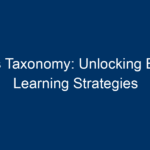In today’s fast-paced world, the pursuit of inner peace can often feel elusive. Stress, anxiety, and distractions compete for our attention, making it challenging to find calm amidst the chaos. However, mindfulness offers a pathway to serenity and clarity, helping you unlock inner peace daily. This article will explore what mindfulness is, its benefits, practical techniques, and how to integrate mindfulness into your daily routine.
What is Mindfulness?
Mindfulness is the practice of being fully present in the moment, aware of your thoughts, feelings, and surroundings without judgment. This simple yet profound approach encourages a heightened sense of awareness, allowing individuals to reconnect with themselves and their environment. Rooted in ancient meditation traditions, particularly those from Buddhism, mindfulness has gained popularity in modern psychology and wellness practices.
The Origins of Mindfulness
Mindfulness has its roots in ancient practices, but it has evolved over the years to fit contemporary needs. The word "mindfulness" comes from the Pali term "sati," which means awareness or attention. In the late 20th century, Jon Kabat-Zinn popularized mindfulness through his Mindfulness-Based Stress Reduction (MBSR) program, introducing it to a broader audience and scientific community.
The Science Behind Mindfulness
Research demonstrates that mindfulness can elicit profound physical and psychological changes. Studies have shown that regular practice can reduce stress, improve emotional regulation, and even enhance cognitive functioning. Furthermore, mindfulness can lead to structural changes in the brain, particularly in areas associated with memory, attention, and self-awareness.
The Benefits of Practicing Mindfulness
Incorporating mindfulness into your daily routine has numerous benefits that extend beyond relaxation. Below are some of the key advantages:
1. Reduced Stress and Anxiety
Mindfulness helps individuals gain perspective on their thoughts and feelings, enabling them to respond to stressors more effectively. By observing thoughts without judgment, practitioners can reduce the emotional toll of anxiety and stress.
2. Enhanced Focus and Concentration
Mindfulness trains the brain to maintain attention on the present moment, improving one’s ability to concentrate. This heightened focus can prove invaluable in both personal and professional settings.
3. Improved Emotional Health
Practicing mindfulness fosters emotional resilience. Regular practice can lead to decreased symptoms of depression and anxiety, and promote greater overall well-being. Mindfulness helps cultivate self-compassion, allowing for a more profound sense of purpose.
4. Better Relationships
Mindfulness improves interpersonal relationships by enhancing communication and empathy. By being fully present during conversations, practitioners can listen more effectively, leading to deeper connections.
5. Physical Health Benefits
Research suggests a correlation between mindfulness and improved physical health. Regular practice can reduce chronic pain, lower blood pressure, and boost immune function, promoting overall well-being.
Mindfulness Techniques to Unlock Inner Peace
Integrating mindfulness into your daily life doesn’t require hours of meditation. Here are several practical techniques you can incorporate into your routine:
1. Mindful Breathing
One of the simplest mindfulness practices is mindful breathing. Spend a few minutes focusing on your breath. Feel the sensation of air filling your lungs and gently focus your attention on each inhale and exhale. If your mind begins to wander, gently bring it back to your breath.
2. Body Scan Meditation
The Body Scan is a great way to increase awareness of bodily sensations. Lie down comfortably and focus your attention on different parts of your body, starting from your toes and moving up to your head. Notice any sensations, tension, or discomfort without judgment.
3. Mindful Eating
Transform your meals into a mindfulness practice by eating slowly and savoring each bite. Focus on the tastes, textures, and colors of your food, and appreciate the nourishment it provides.
4. Walking Meditation
Walking meditation allows you to practice mindfulness while engaging in physical activity. Walk slowly and deliberately, focusing on each step and the sensations in your legs and feet. Notice the sights and sounds around you.
5. Gratitude Journaling
Incorporate mindfulness into your journaling by writing down what you’re grateful for each day. This practice cultivates positive thoughts, shifts your focus to the present, and fosters a sense of inner peace.
6. Mindfulness Apps and Resources
Numerous apps like Headspace and Calm provide guided mindfulness meditation sessions, making it easier to practice consistently. These resources can help you cultivate mindfulness-based habits and connect with a broader community of practitioners.
Integrating Mindfulness into Your Daily Routine
To reap the full benefits of mindfulness, consistency is key. Here are some actionable tips to create a daily mindfulness practice:
1. Set Aside Time for Mindfulness
Designate specific times each day to practice mindfulness. Whether it’s a few minutes in the morning or during your lunch break, commitment to a routine will help build the habit.
2. Start Small
If you’re new to mindfulness, start with just a few minutes each day before gradually increasing the time. Short bursts of practice can be more effective and sustainable than lengthy sessions.
3. Create a Mindful Environment
Designate a calming space in your home or office where you can practice mindfulness. This environment should be free from distractions and conducive to relaxation.
4. Use Reminders
Set reminders on your phone or post sticky notes in visible places to encourage mindfulness throughout your day. A simple cue can prompt you to take a mindful breath or moment.
5. Share Mindfulness with Others
Engage friends or family members in mindfulness practices to share the experience. Joining a mindfulness group or community can also provide support and encouragement as you cultivate this practice.
Conclusion: Your Journey to Inner Peace Awaits
Mindfulness is a powerful tool that can help you unlock inner peace in your daily life. By incorporating simple practices and techniques into your routine, you can cultivate a state of awareness that reduces stress, enhances emotional well-being, and fosters deeper connections with yourself and others. Remember, the journey to mindfulness is personal and unique; embrace the process and explore what resonates with you.
Take that first step today—your path to greater calm and clarity awaits. Embrace mindfulness, and unlock the door to a more peaceful, present, and fulfilling life.




